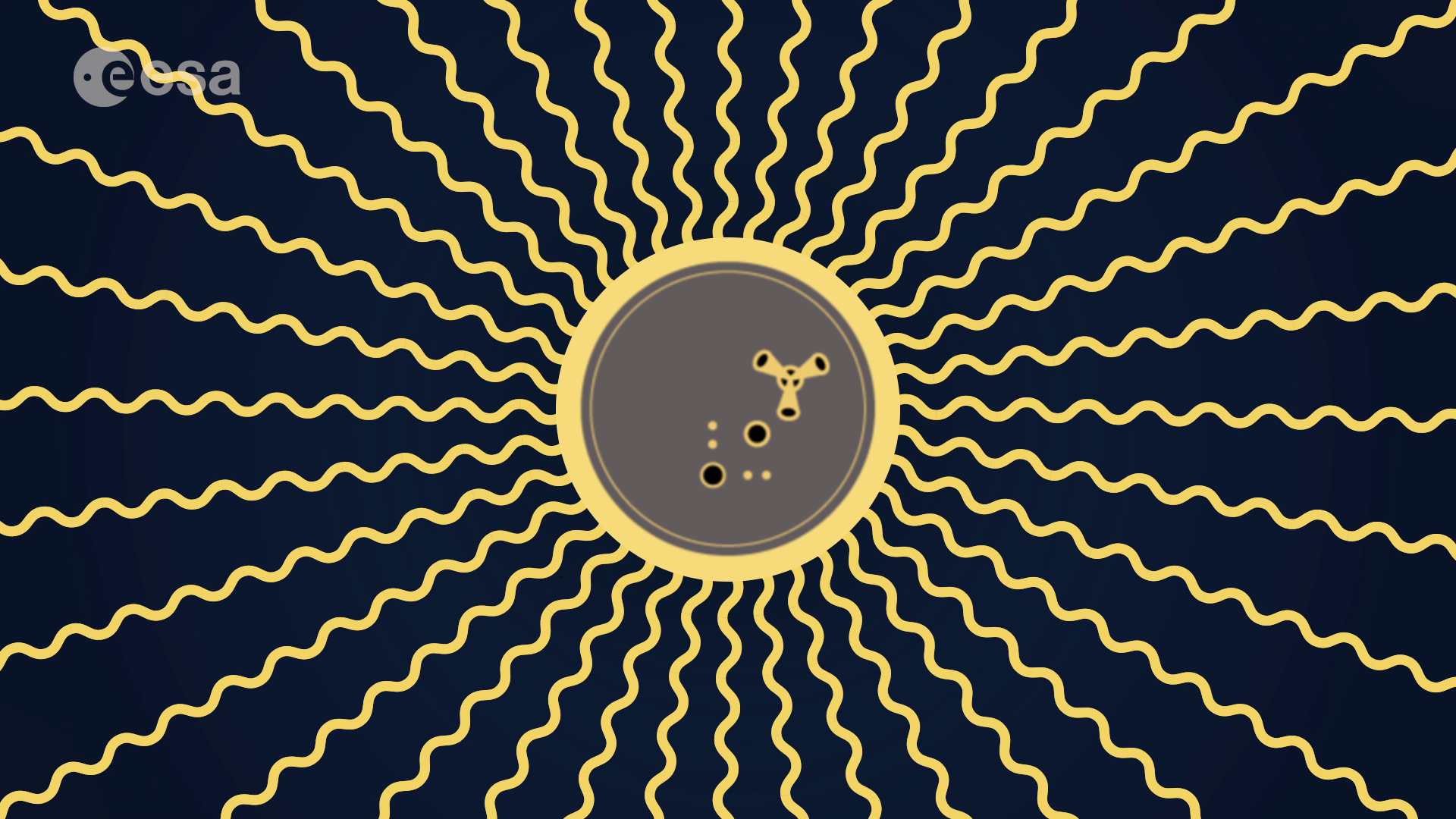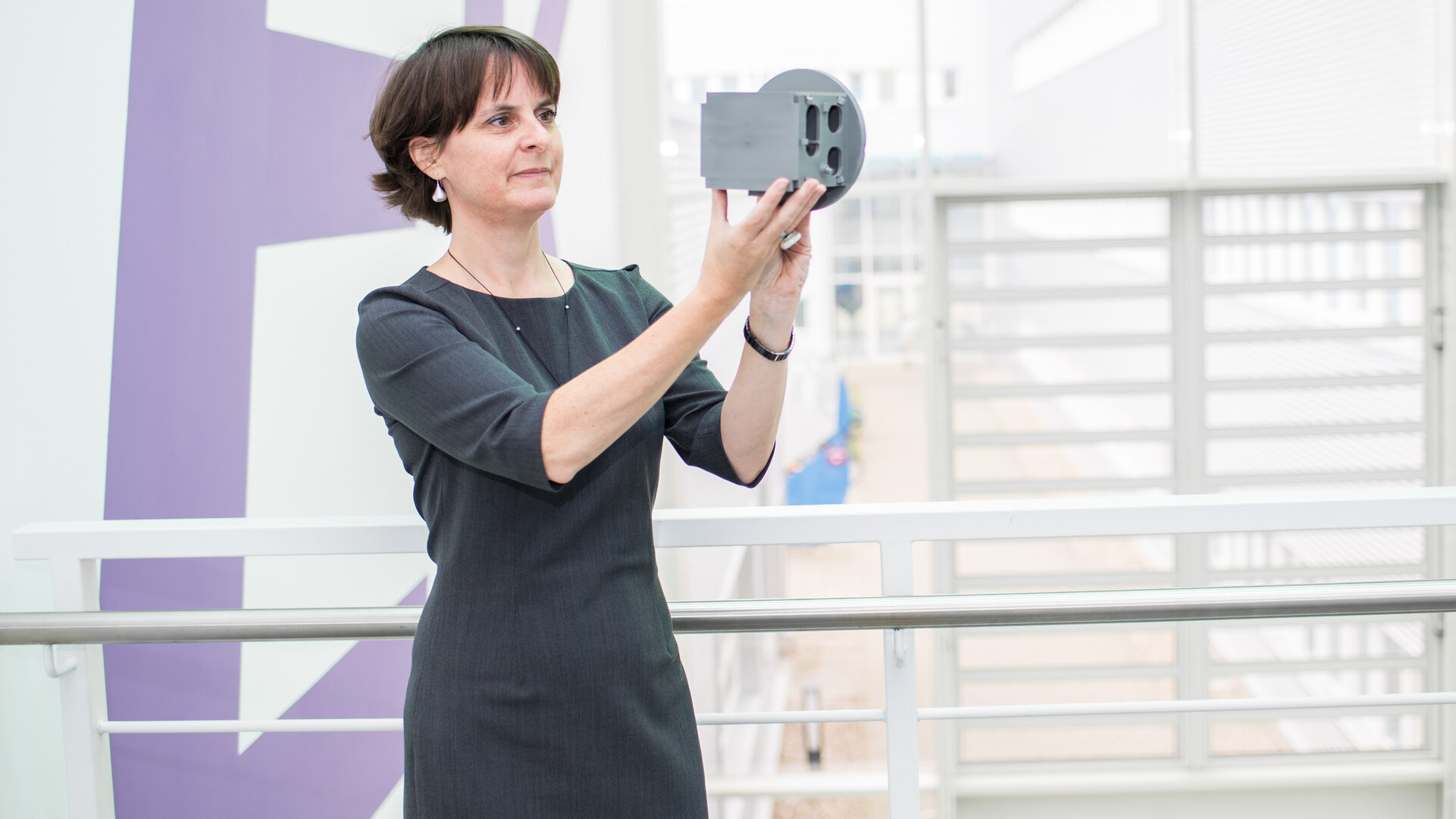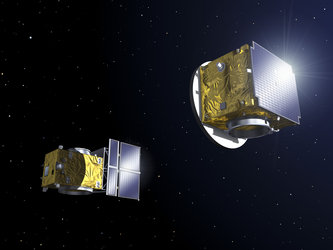Scaling up in space – with formation flying
Agnes Mestreau-Garreau, Proba-3 Project Manager
Due to launch in late 2019, Proba-3 is a technology demonstration mission to explore precision formation flying techniques and technologies. We’re doing this to prepare the way for future space missions.
The fact is that today we cannot launch large structures into space, on a scale of tens of metres, because launcher capability is limited. Satellites can be equipped with deployable elements, to fold out once they’ve reached space – the NASA/ESA James Webb Space Telescope will unfold a sunshield the size of a tennis court – but again we come up against practical limitations when it comes to going bigger.
So, as an alternative, we’re looking into the formation flying of multiple satellites. If their station keeping is sufficiently rigid – we’re aiming at an order of magnitude more than anything demonstrated before, down to millimetre level at 150m apart – then they can operate together like a huge virtual instrument in space.
So Proba-3 is actually made up of two satellites, flying 150 metres apart, one casting a shadow across the other to form an artificial eclipse in space, to reveal faint details of the Sun’s surrounding ‘corona’.


Access the video
This is the mission’s main science goal, but we will additionally be trying out different manoeuvres for a whole range of future missions, such as satellite rendezvous for both cooperative and non-cooperative targets – as will be needed for satellite servicing or active space debris removal.
To make it work we need different ‘metrologies’ or precision measurement systems to allow the satellites to know where the others are relative to each other – based on absolute and relative GPS, inter-satellite radio links and visual sensors – as well as autonomous on-board algorithms.
Verifying these metrologies and algorithms in practical terms would be extremely costly – with the big 150-m setup involved – so we make maximum use of a virtual formation flying testbench previously developed by ESA’s Software section, then modified for us.
The two satellites would have to respond fast, there wouldn’t be time to wait for a command from the ground
The two worst-case scenarios would be collision, on the one hand, so we have detailed collision avoidance manoeuvres to avoid this, and what we call ‘evaporation’ , where the two satellites drift so far away that it becomes too costly in term of propellant to bring them together again.
These will be the first Proba satellites to incorporate platform thrusters – for both coarse motion and fine-positioning. If there’s any disturbance – due for example to solar radiation pressure – then the two satellites would have to respond fast, there wouldn’t be time to wait for a command from the ground. The idea is to gradually demonstrate this autonomy in the first few months of mission life. The satellites will have to break and then resume their formation flying over the course of each 19.7 hour orbit.
The satellites will have a highly elliptical orbit stretching up to 60 000 km away from Earth, and it is while they are furthest away – for about six hours per orbit – that they’ll be observing the solar corona, because they’ll actually be flying at their slowest and less propellant should be required to maintain their relative positions. This orbit means they’ll be passing through a variety of orbital environments – from LEO to MEO and GEO, and through the radiation belts – so this will be a good test for onboard equipment.
Big or small, a satellite is a satellite, and we have two of them: double the elements to design, build and verify. But we benefit from the synergies of the Proba missions that have come before, by harnessing the experience of the people who made them and sharing lessons learned – that’s a big positive, a living database to rely on.
At the same time Proba-3 has many new companies from new ESA Member States involved, so we benefit from their eagerness to develop their capabilities. That’s another strength of the Proba programme; it’s an opportunity to have new entrants tackle challenging elements of a real space mission, rapidly bringing them up to the next level.








